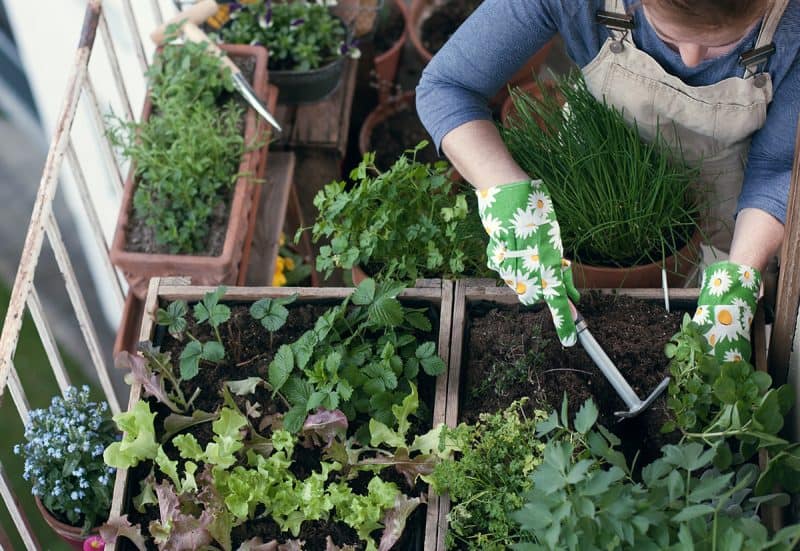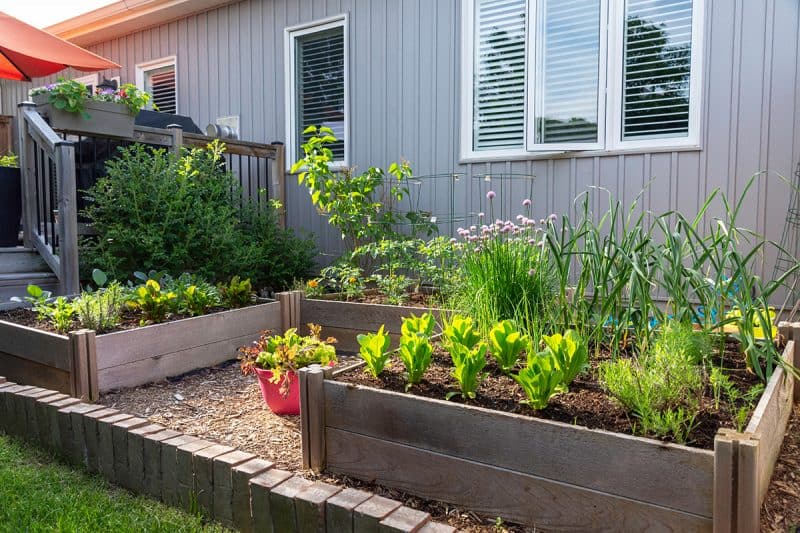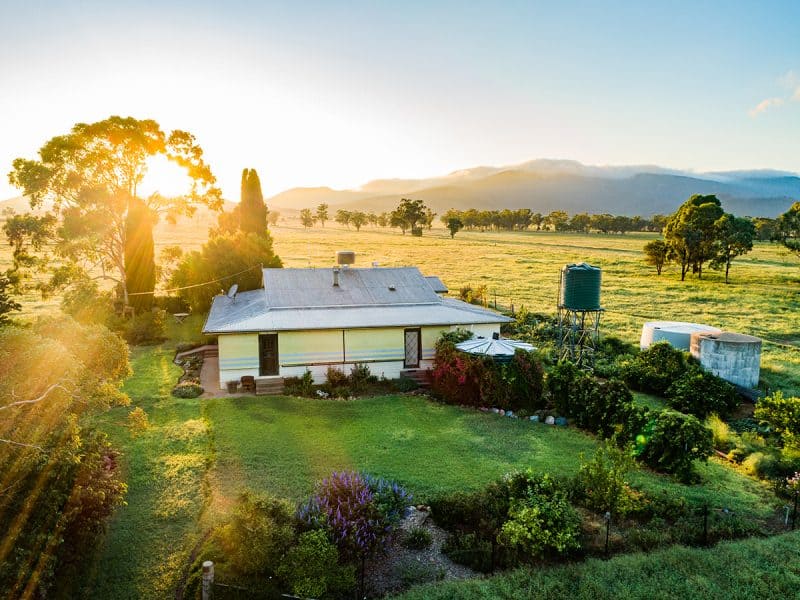Main Types of Homesteading
As mentioned earlier, there are many different types of homesteading, and all can be adapted to your current living circumstances. For example, you could have:
- An apartment homestead: These are ideal for singles or couples, especially those who live in cities.
- Suburban homestead: This is an opportunity for suburb dwellers to transform their backyards into thriving food garden spaces. Depending on zoning laws, they can often include a few chickens.
- Small-scale homesteading: These are traditionally known as “hobby farms” and are generally less than 10 acres in size. They’re large enough to feed an average family comfortably and can support some small livestock.
- A large, more traditional homestead: In this scenario, you have over 10 acres of land to play with. You can dedicate large areas to various crops, plus have livestock pens, maybe a couple of ponds and/or orchards.
Let’s dive into what these homesteads could potentially look like.
Apartment Style

Remember that homesteading is about being as self-sufficient as possible. That doesn’t mean that you have to give up on modern living and luxuries altogether. You can find the middle ground that suits you best, incorporating modernity with traditional skills.
Are you an urban apartment dweller but you dream about becoming a homesteader?
Here are a few of the projects you can engage in:
- Grow a container garden: You can grow edible and medicinal plants in any flat: just plant fruits, vegetables, dwarf fruit bushes or trees, and herbs in containers. Then, place them on your balcony or sunny window. You could even put a small greenhouse on your balcony to extend your growing season.
- Raise small livestock: You can raise two hens in many areas if you have permission from your landlord and space on your balcony. This is a great way to acquire fresh eggs without a ton of space.
- Preserve your own food: As mentioned, you can do this whether you’re growing or buying fresh produce. When something is on sale, stock up and can it, pickle it, or freeze it. Get a pressure canner for low-acid foods—experiment with different jam and jelly recipes, etc.
- Participate in a community garden or allotment project: Many urban areas offer community gardens or allotment spaces. You can participate in the communal work and harvest or cultivate your own assigned space.
- Alternatively, talk to your landlord about the possibility of creating a rooftop garden. That’s likely a big, sunny space that isn’t being used to its greatest potential. Furthermore, the chances are that other tenants would be interested in taking part in this project too!
- Make your own “stuff”: Carve spoons and bowls out of wood. Knit clothes and washcloths. There are all kinds of crafty things you can do in minimal space.
Urban Homesteading

Urban homesteading is what got me into this lifestyle. When I was looking for all kinds of ways to save money, my husband showed me YouTube videos. They were all about self-sufficient people who live in subdivisions. That’s when it hit me: if they can grow all of their own food on a quarter acre, why can’t I do the same on two acres?
So we did. And that is exactly what an urban homesteader does. They have small gardens to feed their families, maybe a small flock of hens, and fresh eggs. Depending upon HOA regulations, some can even get by with having small livestock like goats.
A backyard homestead is ideal because it’s a very manageable space. In fact, if you plan everything well ahead of time, you can have a thriving suburban Eden in less time than you may think. Incorporate some fruit trees and nut bushes in guilds. Use intercropping and companion planting to maximize yields. You’ll be amazed by how much you can grow.
Small and Large Scale Homesteads

These are what you would consider typical homesteads. Most of these homesteads exist in more rural locations and vary from 10+ acres to over 100 acres. Smaller versions are often referred to as “hobby farms.”
On a small-scale homestead, you can transform two acres into a large garden, orchard, a berry patch, and grapevines. Add in a couple of greenhouses, tend some bees, raise chickens, ducks, maybe some rabbits or goats. You’ll still have room left over.
A downside to small-scale homesteading is that you don’t have several acres to devote to animal feed. As a result, you’ll have to purchase some of the food your animals need over the colder months. I don’t have enough room to grow all of the hay we need, so I buy it from local farmers.
However, if you live on a larger homestead, you could be completely self-sufficient in this regard too. Larger-scale homesteaders also have the opportunity to raise large livestock. This includes raising cows for their milk rather than goats.

Responses